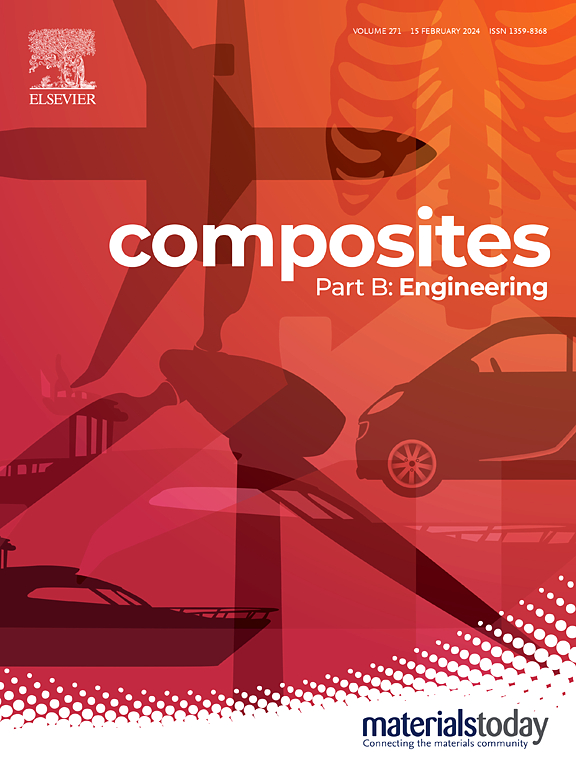Synergistic radical-mediated algal inactivation via FeMoS2/ZnO-persulfate visible-light photocatalysis
IF 12.7
1区 材料科学
Q1 ENGINEERING, MULTIDISCIPLINARY
引用次数: 0
Abstract
FeMoS2/ZnO heterojunction photocatalysts were successfully prepared by hydrothermal synthesis. Scanning electron microscopy (SEM) study revealed that a 3-dimensional porous structure was formed by the uniform distribution of ZnO nanoparticles on the surface of FeMoS2 nanosheets; the distinctive diffraction peaks of ZnO and FeMoS2 were concurrently visible in X-ray diffraction (XRD) patterns, verifying that there were no notable alterations to the two crystal structures during the composite's creation procedure. The successful doping of Fe was validated by an examination using XPS. As demonstrated by UV–Vis DRS, the composite material's light absorption edge was red-shifted from 650 nm to 720 nm in pure FeMoS2, and the band gap width decreased from 1.85 eV to 1.72 eV. These findings suggested that the addition of ZnO had greatly increased sensitivity of the material to the visible light spectrum. The variations in malondialdehyde (MDA), superoxide dismutase (SOD), zeta potential, phycobiliprotein and SEM physiological indexes during the catalytic process were detected, and the cell shape of Chlorella vulgaris was found to be significantly harmed by the FeMoS2/ZnO/PDS/Vis system. Analysis using free radical trapping and EPR revealed that the primary active species in this system's algal inactivation mechanism were hydroxyl radicals (HO•). In light of these findings, a possible response mechanism for the FeMoS2/ZnO/PDS/Vis inactivation of algae was put forth.
通过FeMoS2/ zno -过硫酸盐可见光催化协同自由基介导的藻类失活
采用水热合成法成功制备了FeMoS2/ZnO异质结光催化剂。扫描电镜(SEM)研究表明,ZnO纳米粒子均匀分布在FeMoS2纳米片表面,形成了三维多孔结构;在x射线衍射(XRD)图中可以同时看到ZnO和FeMoS2的独特衍射峰,验证了在复合材料的形成过程中,两种晶体结构没有明显的变化。通过XPS检测,证实了铁的成功掺杂。UV-Vis DRS表明,在纯FeMoS2中,复合材料的光吸收边从650 nm红移到720 nm,带隙宽度从1.85 eV减小到1.72 eV。这些结果表明,ZnO的加入大大提高了材料对可见光光谱的灵敏度。检测了催化过程中丙二醛(MDA)、超氧化物歧化酶(SOD)、zeta电位、藻胆蛋白和SEM生理指标的变化,发现FeMoS2/ZnO/PDS/Vis体系对普通小球藻的细胞形态有明显的影响。自由基捕获和EPR分析表明,该系统中藻类失活机制的主要活性物质是羟基自由基(HO•)。在此基础上,提出了藻类对FeMoS2/ZnO/PDS/Vis失活的可能响应机制。
本文章由计算机程序翻译,如有差异,请以英文原文为准。
求助全文
约1分钟内获得全文
求助全文
来源期刊

Composites Part B: Engineering
工程技术-材料科学:复合
CiteScore
24.40
自引率
11.50%
发文量
784
审稿时长
21 days
期刊介绍:
Composites Part B: Engineering is a journal that publishes impactful research of high quality on composite materials. This research is supported by fundamental mechanics and materials science and engineering approaches. The targeted research can cover a wide range of length scales, ranging from nano to micro and meso, and even to the full product and structure level. The journal specifically focuses on engineering applications that involve high performance composites. These applications can range from low volume and high cost to high volume and low cost composite development.
The main goal of the journal is to provide a platform for the prompt publication of original and high quality research. The emphasis is on design, development, modeling, validation, and manufacturing of engineering details and concepts. The journal welcomes both basic research papers and proposals for review articles. Authors are encouraged to address challenges across various application areas. These areas include, but are not limited to, aerospace, automotive, and other surface transportation. The journal also covers energy-related applications, with a focus on renewable energy. Other application areas include infrastructure, off-shore and maritime projects, health care technology, and recreational products.
 求助内容:
求助内容: 应助结果提醒方式:
应助结果提醒方式:


